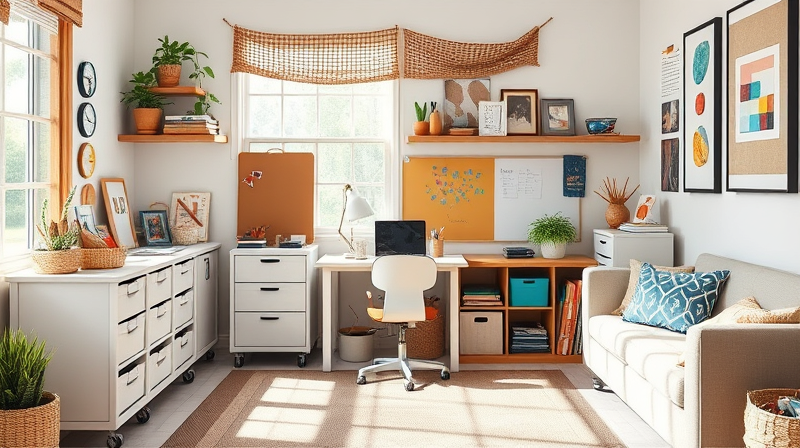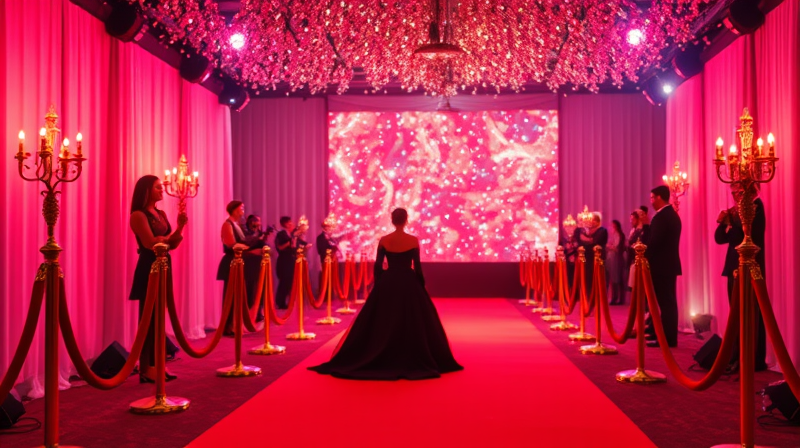Creating a dedicated art corner at home can transform a simple space into a hub of inspiration and creativity. Whether you are setting up an area for yourself or designing a creative retreat for your children, a well-planned art corner can serve as a sanctuary for artistic expression. With some clever organization and a few cost-effective ideas, any unused space in your home can be repurposed into a vibrant creative zone.
Many people mistakenly believe that a large studio is necessary to create a productive art space. In reality, even the coziest nook can be transformed into an inspiring haven. The key is to choose a space that fits your lifestyle and creative needs while being flexible enough to adapt as your projects evolve.
Finding the Ideal Space
Your art corner does not need to be a dedicated room. Look around your home for areas that are underutilized: a spare bedroom, a corner of the dining room, or even an attic can serve as the perfect foundation for creativity. A modest space such as a closet can also be repurposed with a rolling art caddy, making the setup adaptable and less permanent.
If you have the luxury of additional space, consider an outdoor shed, especially if you'll be working on projects that involve messy materials or large-scale creativity. Embrace the flexibility that smaller spaces offer—the option to rearrange or modify the area as needed can lead to unexpected and delightful design solutions.
Essential Furniture and Tools
When it comes to choosing furniture and tools for your art corner, simplicity is key. Start with a flat, sturdy surface that can accommodate your artistic endeavors. Whether it’s a traditional table, a compact desk, or a fold-down table, the workspace should be comfortable enough for extended creative sessions.
For those with children, smaller tables and chairs or even adjustable furniture designs can help encourage artistic expression while keeping the space safe and accessible. Adults may find that a larger drawing table or an easel offers the best environment for setting up more involved projects.
Consider your storage options as well. Proper storage keeps your work area organized and ensures that your supplies are always within reach. Shelving units, art carts, or small storage bins can help to balance both order and creativity as you transition between different projects.
Organizing for Maximum Creativity
An organized space leads to an organized mind. When designing your art corner, categorize your supplies according to how frequently they are used. Keep everyday items like crayons, pencils, and paper within arm’s reach, while less common or specialty materials can be stored in drawers or in a separate container.
Implementing distinct stations within the art corner—perhaps one area for coloring, another for painting, and a third for craft projects—can foster a sense of structure without restricting creative flow. This division helps to keep the space neat and teaches valuable organizational skills, especially for children who are just beginning to understand creative processes.
- Daily Use Supplies: Keep markers, papers, and small craft items handy.
- Specialty Materials: Store paints, brushes, and other valuable tools securely yet accessibly.
- Cleaning Tools: A small bucket or wipes can help manage any mess, so cleaning becomes a part of the artistic ritual.
Making the Space Inspiring and Personal
Personal touches can elevate your art corner from a mere workspace to a source of constant inspiration. Consider decorating with vibrant colors, wall art, or even an inspiration board where you can attach sketches, quotes, and photos that spark your creativity. Let each item in your space tell a story or serve a functional purpose in your journey as an artist.
Encourage participation from everyone in the household by involving them in the decoration process. Children especially benefit from personalizing their creative space; when they see their own artwork on display, it reinforces a sense of pride and ownership. These creative touches make the art corner truly unique and deeply personal.
Keeping It Practical and Adaptable
No art space is complete without a bit of clutter. Remember, mess is part of the creative process, and sometimes it is a reflection of a productive mind at work. Instead of stressing over keeping everything pristine, focus on functionality and flexibility. Organize the space so that it is easy to clean up after a burst of activity, and consider having dedicated storage solutions that can be easily rearranged as needed.
This flexibility is particularly important for those who share the space with family members. Teaching children how to use and tidy the art corner is an opportunity to instill responsibilities while honoring their creative impulses. Encouraging cleanup as part of the creative process ensures that the space remains a welcoming environment for everyone.
Fresh Ideas for the Future
Looking forward, trends suggest that an art corner should be as dynamic as the creative flow it is intended to inspire. Modern designs emphasize mobility and adaptability—a rolling art caddy, movable tables, and versatile storage units can adjust to various needs as they arise. Consider positioning the art area near a window to harness natural light, which not only boosts creativity but also makes the space feel more open and inviting.
Embrace the evolving nature of your needs as an artist. Every project may inspire a new layout or require different tools, so do not be afraid to tweak your setup. The goal is to create an environment that nurtures creativity and adapts fluidly to new ideas, ensuring that your art corner remains a constant source of inspiration throughout the years.
Ultimately, a DIY home art corner is more than just a physical space—it's a creative sanctuary that grows with you. With thoughtful planning, a few creative ideas, and a commitment to embracing change, you can cultivate a space where every brush stroke and every doodle is a step towards artistic fulfillment.








